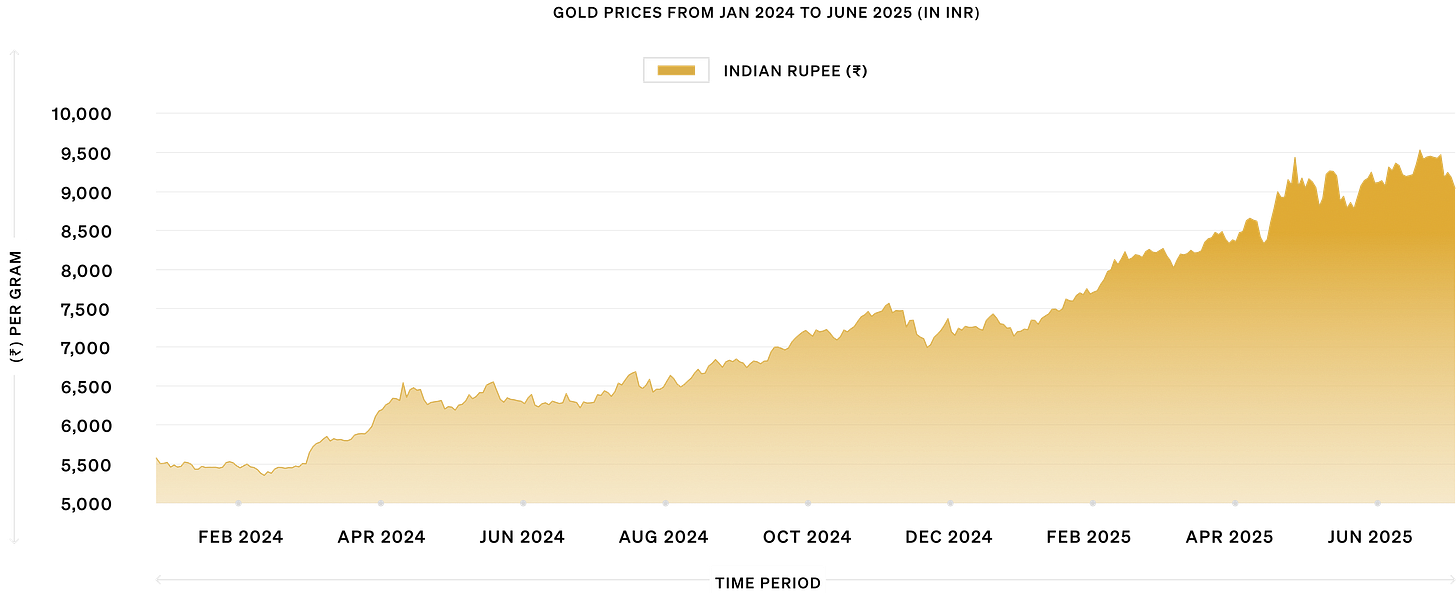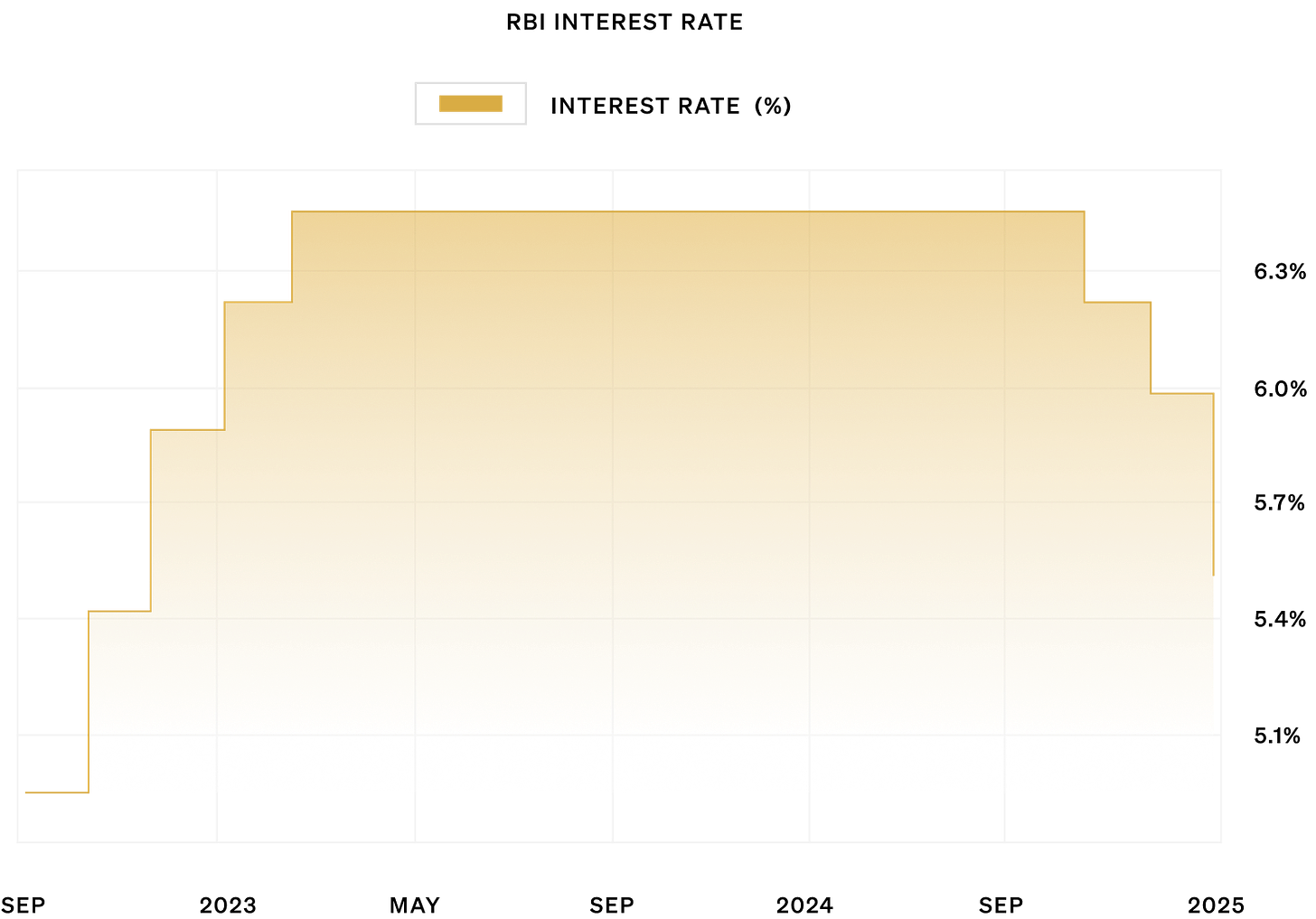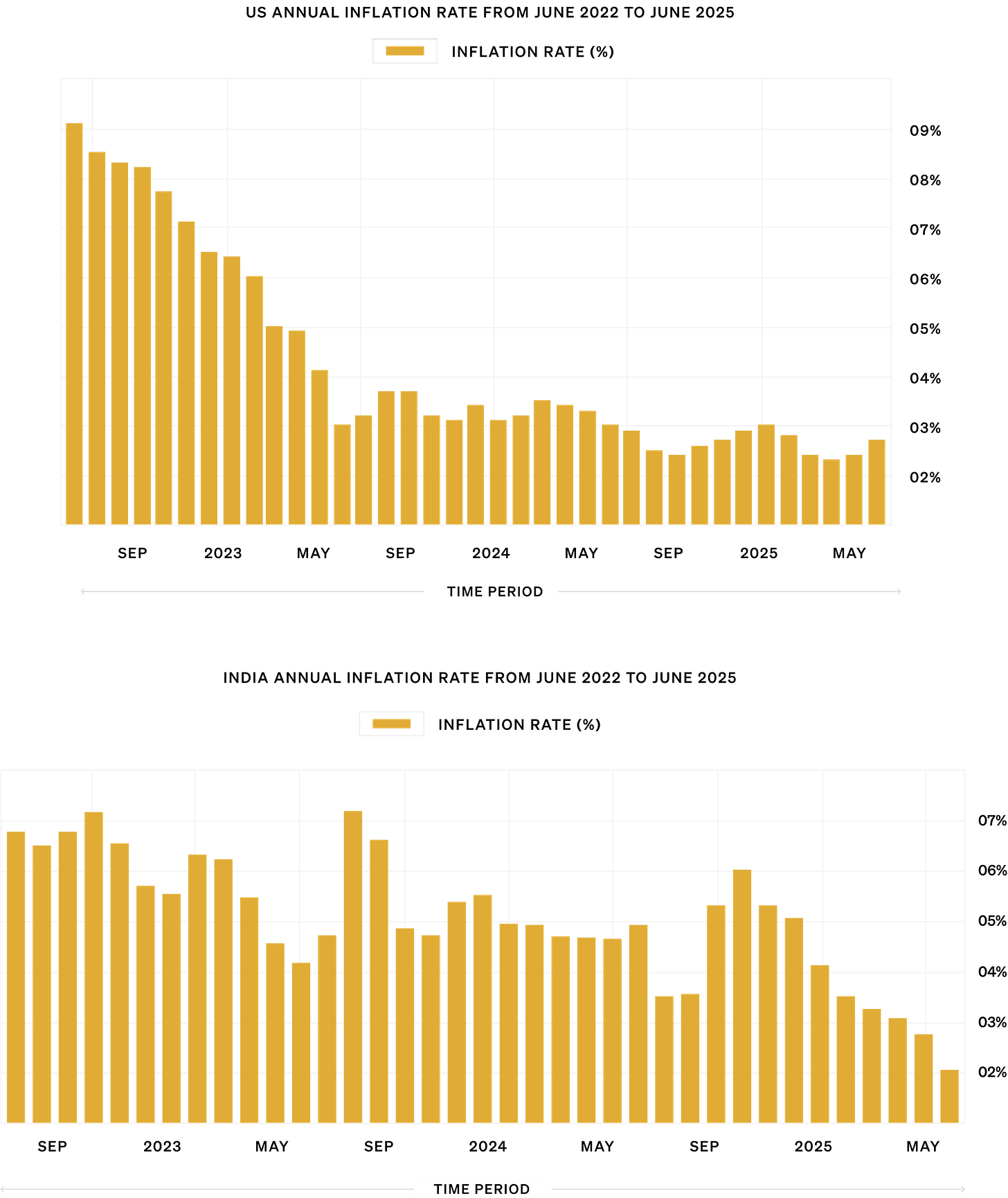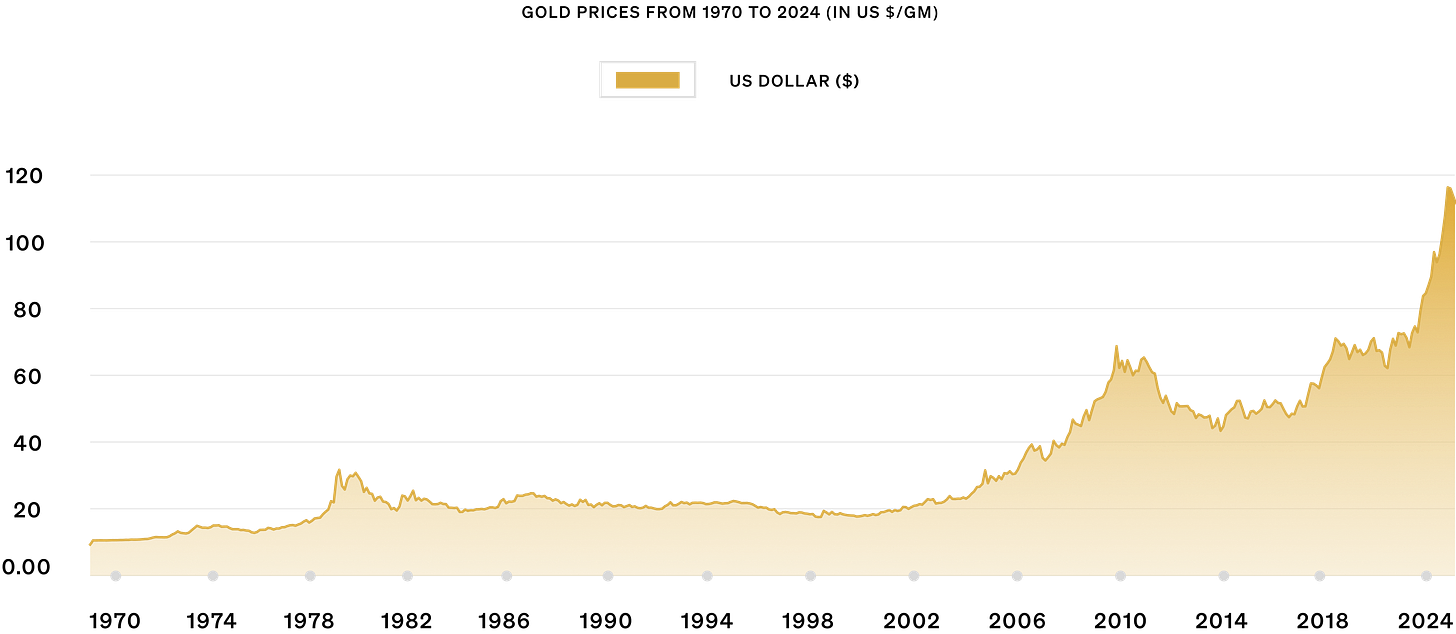Gold in Motion (Jan ’24 to Mid ’25)
Gold Price Movement
Gold has experienced an extraordinary bull market, demonstrating one of its most significant surges in recent history.
The price of gold escalated from $2,063.73 to $3,343.44 within a mere 18 months period, reflecting an impressive +62% rise.
This substantial appreciation underscores gold’s robust performance in the current economic climate.
In comparison to other major asset classes, gold emerged as a top performer during this tumultuous period.
Its a 62% rise significantly outperformed other asset classes like equities, bonds, and crude oil.
While this rise is seen in terms of USD/Oz, the graph below shows this surge in INR/gram. With respect to the Indian markets, it has shown a jump of nearly 52% during the same period.
Key Performance Drivers
Several critical factors converged to propel gold’s recent rally.
Geopolitical Risk: Heightened market volatility, fueled by on going tensions such as the Russia-Ukraine conflict, instability in the Middle East, and trade disputes between the US and China, significantly increased demand for gold as a safe-haven asset.
Federal Reserve Policy Changes: The Federal Reserve’s strategic interest rate cuts, totaling 100 basis points (bps) in 2024, created a more favorable environment for gold. Lower interest rates typically reduce the opportunity cost of holding non-yielding assets like gold, making it more attractive to investors. A similar behaviour can be seen in the decisions of the RBI in India. The central bank’s interest rate has either remained unchanged or have been reduced, pushing the demand upwards for gold.
Inflationary Pressures: Persistent inflation rates, with core inflation hovering around 2.8%, sustained high demand for gold. Investors view gold as a reliable hedge against the reducing purchasing power caused by inflation. In the Indian markets, while the inflation rates went down in the first half of 2025, they remained at a higher scale for the almost the entire 2024.
De-dollarization Trend: A subtle global shift away from holding US dollar-denominated reserves, particularly in major economies like China and Russia, has intensified the demand for gold as an alternative reserve asset.
Broader trends affecting Gold
The recent surge in gold prices reinforces its established status as a long-term hedge during periods of uncertainty.
Historical analysis reveals a strong correlation between gold’s performance and global financial crises, as well as increased geopolitical stress, shown by its price movements during 2008-2011 and 2020-2021.
Recent Acceleration: The Russian invasion of Ukraine notably accelerated this de-dollarization trend, forcing nations like China and India to increasingly acquire gold to enhance their financial independence and avoid geopolitical risks.
Historical Precedents: Post-1971 Bretton Woods Collapse: Following the abandonment of the gold standard, the US dollar’s direct link to gold was cut, leading other nations to diversify their reserves into gold.
2010s-2020s: Countries such as China and Russia have consistently increased their gold reserves, viewing this strategy as a counter measure against potential sanctions from powers like the US and other broader geopolitical uncertainties.


